Home | Tours | Trip Reports | News | Team | Calendar | Links | Contact | Store | Mailing List
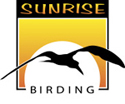 LESVOS: Spring
Migration Magic
LESVOS: Spring
Migration MagicApril 20 - 27, 2024
Plus ORCHID/WILDFLOWER pre-trip extension!
April 17 - 20, 2024
Contact [email protected] to
reserve your space!
![]()
Trip
Cost and Travel Planning> Registration
Form>
Tour
Registration, Terms, Cancellation
Policies>
The
Greek Island of Lesvos,
also known as Lesbos,
is renowned for its
ancient history, incomparable
natural beauty and tradition
of hospitality. Known
as the Princess of the
Northwest Aegean Sea,
this stunning island
has become known by
birders as one of the
best locations in Europe
to witness spring migration.
Our base in the small
fishing village of Skala
Kalloni is perfectly
located beside some
wonderfully bird rich
habitats, including
a reed-fringed pool
right next to our hotel.
From here, the rest
of the island with its
varied countryside,
historic villages and
friendly people, can
be easily explored.
Whether searching out
the island’s
special birds, such
as Krüper's Nuthatch
and Cinereous Bunting,
or marveling at the
continual stream of
fabulous eastern migrants,
or enjoying some of
the island’s
70 species of orchids, you will soon be captivated by the
magic of Lesvos. From the slopes of Mount Olympus, to the
island’s
sparkling rivers
and lakes, to picturesque
fishing villages
alongside beautiful
golden beaches,
this island with
its wealth of resident
and migrant birds
will have you longing
to return. In 2024, we'll be offering an exciting pre-trip extension to discover the diversity of orchids and wildflowers in bloom in early spring.
Leaders: Gina Nichol & Steve Bird
Trip Cost and Travel Planning>> Registration Form>>
ITINERARY - Main Tour
Day
1, April 20, 2024:
After our arrival in Mytilene (airport code MJT), the capital of Lesvos, we will make our way to the small fishing village of Skala Kalloni where our hotel is situated beside a small reed-fringed pond, often a magnet for water birds and marsh terns. If we have time before dinner we will take a short walk to see how the spring migration of countless birds is progressing.
Days
2–7:
Based in the perfect location to explore this wonderfully scenic island, we can enjoy short drives to a variety of habitats that attract overwhelming numbers of migrants! If conditions are right you can witness to breathtaking falls of birds and it is not unusual to see hundreds of Red-backed Shrikes or Black-headed Buntings, or up to fifty Red-footed Falcons perched along telegraph wires.
From the moment you step outside the hotel door you are in bird heaven! The pond beside our hotel can be alive with Whiskered, White-winged and Black Terns hawking insects just a few meters in front of us. A further search of reedy edges can produce Glossy Ibis, White Stork, Little Bittern, Squacco Heron, Garganey, Black-winged Stilt, and occasionally something more unusual such as Great Bittern, Great Snipe or Spotted Crake. Streams of Barn Swallows can often be accompanied by a few Red-rumped Swallows, Sand Martins and wheeling flocks of Common Swift that could have Alpine and Pallid among them. Yellow Wagtails of several very distinct races including the very smart Black-headed will vie for our attention, while Spanish Sparrows, Turtle Doves and a raptor or two will make the first hour of birding all you had hoped for!
We will only have short distances to travel with some of the best birding sites literally on our door step. The east and west rivers with their weedy Tamarisk-lined banks can hold a whole host of interesting species. Depending how shallow the river is, it can attract endless numbers of European Bee-Eaters, waders including Wood Sandpiper, Green and Common Sandpiper, Little Ringed Plover, Ruff, Temminck’s and Little Stint, Squacco Heron, White and Black Stork, Little and Great Egret, Black-crowned Night-Heron, Gull-billed Tern, and the elegant Ruddy Shelduck. Along the edges, we can look for Common Nightingale, Eastern Olivaceous, Great Reed and Cetti’s Warblers. Sometimes we get Savi’s and River Warblers here and by the end of the week, the superb Black-headed Bunting and flocks of dazzling European Bee-Eaters will have appeared.
Between the East River and the nearby saltpans several arable fields can attract flocks of Marsh and Montagu’s Harriers and occasionally we see a few ghostly Pallid Harriers, as well as gorgeous groups of Collared Pratincoles, Lesser Gray and Woodchat Shrike, European Roller, Little Owl, and up to fifty Red-footed Falcons. Crested Larks and Corn Buntings are common and the area always holds a surprise or two. The saltpans will yield many more wading birds with Wood Sandpiper the most common along with elegant summer plumaged Marsh Sandpipers, stunning plum-colored Curlew Sandpipers, close views of Temminck’s and Little Stints, Kentish Plover, huge flocks of Ruff, Spotted Redshank, Pied Avocet, Little Gull, Spoonbill, Greater Flamingos and the motionless Stone Curlew. Over the years we have seen Dalmatian Pelican, Spur-winged Plover, Cream-colored Courser, Black-winged Pratincole and Caspian Plover so once again we could have a nice surprise! This area is also traditionally a good spot to see the attractive Ruddy Shelduck.
The surrounding sheep fields can hold flocks of Greater Short-toed Lark, Tawny Pipit, Citrine Wagtail and Red-throated Pipits with beautiful brick-red throats. Up to four races of Yellow Wagtail will keep us working hard and we will constantly keep an eye out for raptors and terns passing overhead. This is a great place for seeing some of the more unusual species such as Caspian Tern, Lanner Falcon, Short-toed Eagle, Honey Buzzard, Golden or even Lesser or Greater Spotted Eagle.
Heading inland from the salt pans, we drive into a beautiful wooded valley full of oaks and olive trees. It is here that we should see our first Masked Shrike, Sombre Tit and Middle-spotted Woodpecker, Pied Flycatcher, Long-legged Buzzard or even a Rufous Bush Robin. As Hoopoes lazily drift by and Golden Orioles fill the valley with their flutey calls we will look for the shy and difficult Olive Tree Warbler, a bird that is a late arrival and only really possible toward the end of our stay.
As we continue on towards the wild rocky north coast we will make a few stops to look for breeding Ruppell’s Warbler and Eastern Orphean and Bonelli’s Warblers, plus Blue Rock Thrush, Black-eared Wheatear, Peregrine Falcon, Goshawk, Crag Martin, Rock Nuthatch, Alpine Swift, and along the coastline the rare Audouin’s Gull, and flocks of Yelkouan Shearwaters with even the possibility of the potential ‘new’ Scopoli’s Shearwater. With views of the Turkish coast in the distance this area sees many migrants leaving the island and a nearby inland lake can be a great place to find Ortolan Bunting, Hobby or something a little unusual such as Thrush Nightingale, Rufous-tailed Rock-Thrush, Great-spotted Cuckoo or the rare White-throated Robin.
The western side of the island with its arid volcanic hillsides is home to one of the birds everyone wants to see, the rare Cinereous Bunting. Lesvos is one of the best places in the world to see this little-known species, and we hope to find them singing from the rock strewn hillside. Here too are Cretzschmar’s Bunting, Rock Sparrow, Isabelline and Black-eared Wheatears, Blue Rock Thrush and more chances for Rock Nuthatch.
Ipsilou Monastery is one of our favorite picnic stops, set on top of a small hill we can enjoy superb views of the west coast. If weather condition are right this spot receives amazing falls of migrant birds; we saw a flock 27 Levant Sparrowhawks very low over our heads on one tour and often get Honey and Long-legged Buzzard, and Short-toed Eagle. The surrounding trees and bushes can hold Collared, Spotted, and occasionally Semi-collared or Red-breasted Flycatchers, Golden Orioles, Chukar, Wood Lark, Wood, Eastern Bonelli’s, Icterine, Barred and other warblers. This is also a good spot for butterflies with Southern Festoon nearly always present.
The west coast itself especially around Sigri, is a very fertile area that can be exceptionally good for migrants with incredible numbers present on a good day. It’s not unusual to see hundreds of shrikes or buntings and careful searching can reveal Wryneck, Great Snipe, Levant Sparrowhawk, Collared Pratincole, Great Reed Warbler, Lesser Gray Shrike, while flocks of Red-footed Falcons and Lesser Kestrels hunt over the fields.
The
pine forests on the
eastern half of the
island hold the other
star bird of the island
the diminutive but
delightful Krüper's Nuthatch.
It is not always easy
to see, but we will
make a special effort
to catch up with this
highly localized bird,
which here, is on the
western edge of its
range. In addition
to the nuthatch we can
also find Short-toed
Treecreeper, Serin,
Woodchat Shrike, and
some very good flowers
including many species
of orchid.
Another area we traditionally take a pre-breakfast walk, is around a small pond where Little Crake and sometimes Spotted and Baillon’s Crake can be seen very well. There are often a few Black-crowned Night-Herons and Squacco Heron to be seen, while Red-rumped Swallows pose on the reed tops where they have spent the night. Reed, Sedge and Great Reed Warblers can certainly be heard and we will search for Savi’s and possibly River Warbler as well as Little Bittern. This can be a magical place early morning as the sunlight allows for stunning photography.
Birding this beautiful unspoiled island is not the only thing that will have you wanting to return. In addition, we will also discover the butterflies, dragonflies, reptiles and flowers of this magical island.
Day
8, April 27:
After some morning birding, we will depart the area heading back to Mytilene for international flights out.
LEADERS: Gina Nichol, Steve Bird and others depending on group size.
NEW!
ORCHID/WILDFLOWER pre-trip extension
April 17 - 19, 2024
Orchids, Anemones, Fritillaries, Tulips and more!
Join us to discover the diversity of plant life on Lesvos, in particular, the special orchids and wildflowers in bloom in mid-April. Lesvos boasts more than 80 species of Orchid with as many as 60 species and subspecies blooming in April. Orchid list and details> Flowering times are dependent on weather conditions and we'll spend two full days discovering these amazing plants as well as the Anemones, Fritillaries, and the Aegean Tulips thought to be the ancestors of all modern tulips.
Day 1, April 17, 2024:
After our arrival in Mytilene (airport code MJT), the capital of Lesvos, we will make our way to the small fishing village of Skala Kalloni. Our tour begins with dinner tonight.
Days 2 & 3, April 18 & 19, 2024:
We have two full days to discover and delight in the flora offerings of the island. We'll search the best areas of calcareous soils, olive groves, and Chestnut and pine forests for orchids and other plants under the direction of Paul Manning, who will share his broad knowledge of Lesvos flora and fauna as well as his passion for orchids. Delights could include
Pyramidal,
Green-winged,
Provence,
Naked Man,
Milky,
Toothed,
Mirror,
Bee,
Orphanides',
Homer's, and
Mammosa Orchids, Sword-leaved Helleborine, and if we are lucky and the conditions are right, Reinhold's Orchid and the endemic Lesbos Orchid.
Day 4, April 20, 2024:
The pre-extension ends with breakfast and time to review your sightings and prepare for our main Lesvos tour.
Extension LEADER: Paul Manning
(assisted by Gina Nichol & Steve Bird)
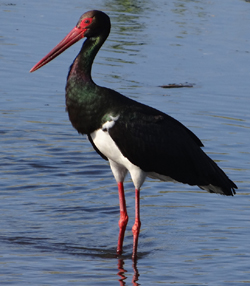
Black Stork. Photo by Gina Nichol.
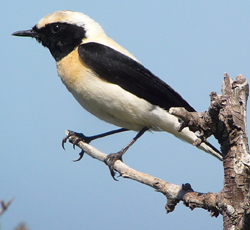
Black-eared Wheatear. Photo by Gina Nichol.
Some target species of this tour: Krüper's Nuthatch Cinereous Bunting Masked Shrike Black-headed Bunting Olive Tree Warbler Sombre Tit Scops Owl Rüppell's Warbler Cretzschmar's Bunting Little Crake Great Snipe Semi-collared flycatcher Collared Pratincole Levant Sparrowhawk Audouin's Gull Red-footed Falcon Eleanora's Falcon lsabelline Wheatear and much more! |
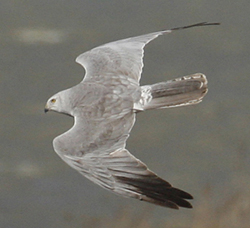
Pallid Harrier. Photo by Steve Bird.
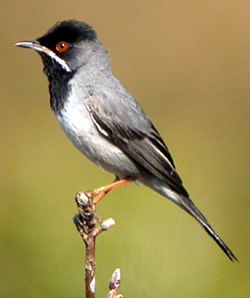
Rüppell's
Warbler. Photo by Steve Bird.
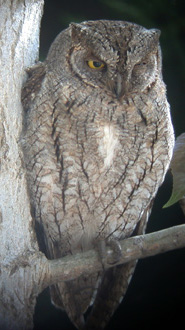
Scops Owl. Photo by Steve Bird.
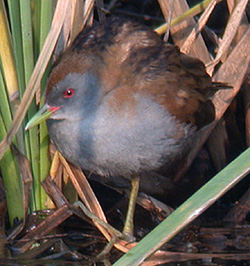
Little Crake. Photo by Steve Bird.
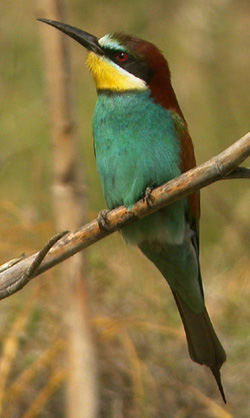
European Bee-eater. Photo by Steve Bird.
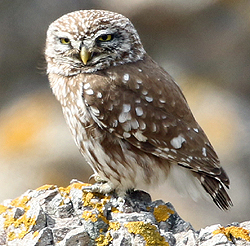 Little Owl. Photo by Steve Bird.
Little Owl. Photo by Steve Bird.
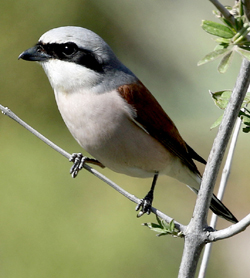
Red-backed Shrike. Photo by Steve Bird.
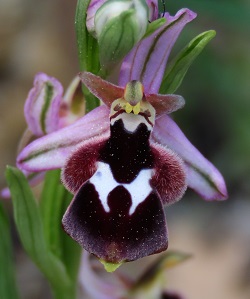
Reinhold's Orchid by Gina Nichol
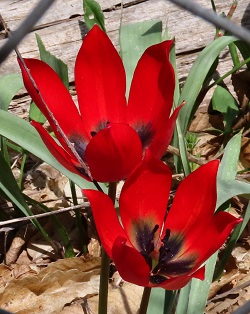
Aegean Tulip by Gina Nichol
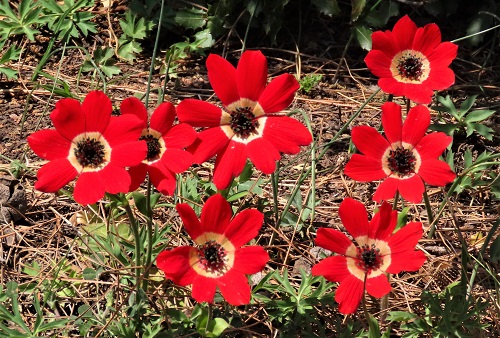
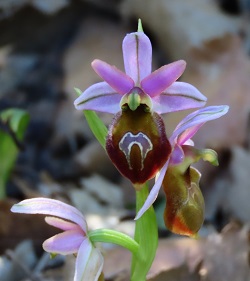
Lesbos Orchid by Gina Nichol
Left, Peacock Anemonies by Gina Nichol
Below: Collared Flycatcher.
Photo by Steve Bird.
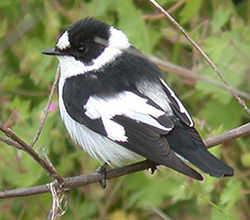 LESVOS Registration
Form>> LESVOS Registration
Form>>Spring Migration Magic! April 20 -27, 2024 MAIN TOUR PRICE: US$2695.00 per person from Mytilene, Greece (Airport code: MJT) based on double occupancy. Price based on current exchange rates when the tour was posted and subject to change (**see note below). Single Supplement: US$395.00 per person (subject to availability)
WILDFLOWER EXTENSION, April 17 - 20, 2024 Not included: International flight to and from Mytilene, Greece, insurance, drinks, and items of a personal nature. Also, any and all costs arising from pandemic or Covid-19 related issues are not included in the tour cost and are the sole responsibility of the traveler. These include, among others, the costs of Covid treatment, hospitalization, medical fees, transport, meals and accommodation in case of illness or quarantine, and the costs of any Covid tests needed before, during and after the tour.
Tour Code: This is a standard birding tour with regular birding walks. We usually break the day into 2 parts with a pre-breakfast excursion, followed by a full day out with picnic or taverna lunch. The weather can be unsettled at this time of year, expect everything from bright and sunny weather to some cooler weather with the chance of an odd shower so prepare for all eventualities.
Final payment is due by January 19, 2024 and must be paid by check or bank transfer.
TRIP INSURANCE:
PLEASE NOTE:
Questions?
Contact Gina
Nichol at gina@sunrisebirding.com |